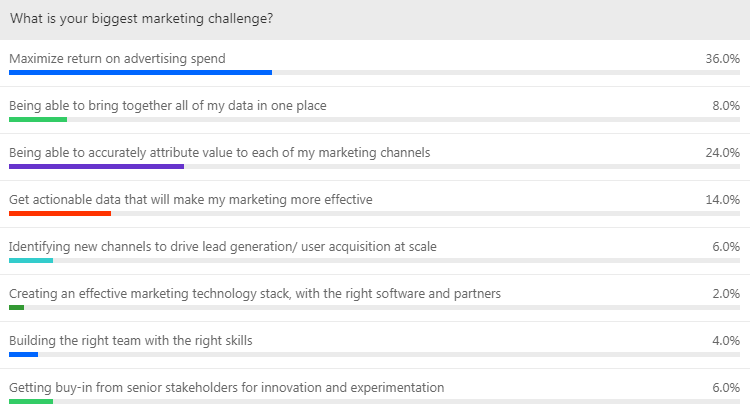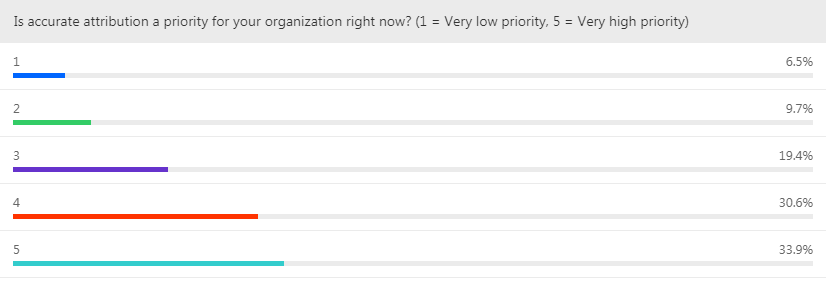“Better the devil you know than the devil you don’t.”
That famous quote applies to the many marketers who default to last-click attribution, even with its well-documented failure to take the entire customer journey into consideration.
During ClickZ’s latest Masterclass on paid search optimization, in association with Fospha and Kenshoo, we surveyed 800 marketers on their greatest challenges. 36% cited maximizing return on their advertising spend, while an additional 24% consider “accurately attributing value to each marketing channel” to be their biggest struggle.
From this, it’s clear that marketers want to go beyond last-click and adopt a more effective attribution model. But faced with more channels, more data and more opportunities to experiment than ever before, they don’t always know how to go about implementing one.
Here are four takeaways from the webinar:
1. Understanding the problem
The fact that marketers struggle with measurement isn’t surprising, given how many different channels and devices go into the path to purchase. “Increasingly, expensive marketing decisions are based on more limited windows into the customer journey,” says Sam Carter, Sales and Marketing Director at multi-touch attribution specialist Fospha.
True marketing effectiveness requires integrating as much consumer data as possible to create a single user profile. A multi-touch attribution model assigns value to every touchpoint, eliminating the notion that the last thing someone clicked on is the catalyst for conversion. This often results in marketers having inaccurate perceptions of their best-performing keywords.
2. Starting small
To implement full-scale optimization overnight is an impossible task. Carter recommends starting with a few key foundational data sets, such as paid search cost data and revenue data from your Customer Relationship Management (CRM) platform.
“When the cost is tied to a visit or conversion, you’re able to shine a light on costly keywords that aren’t playing any role in conversions,” says Carter, adding that this method saved Procter & Gamble $140 million in a single quarter (without any reduction in growth rate).
3. Combining complementary platforms
Once you’re comfortable with your understanding of the role keywords play in each step of the customer journey, it’s helpful to take your data and “let it breathe” by utilizing another tool, such as a bid management platform that’s more focused on optimizing paid search campaigns.
Using technologies in tandem can help improve accuracy, something of significant importance to 64.5% of our webinar attendees.
“Kenshoo can take any attributed data source and create a bid policy that uses a custom calculation,” explains David Bowen, the platform’s director of client success. “Similar to the Stock Market, we use a system of machine learning to look at how all the keywords are working together and make predictions based on the outcome of a bid change.”
4. Dotting the I’s and crossing the T’s
According to Darral Wilson, Director of Solutions at Kenshoo, one of the most crucial elements of dynamic attribution is attention to detail. Is everything tagged? Do you unknowingly have duplicate keywords that are competing?
“If there are gaps in the data or if your search campaign isn’t structured properly, you won’t get as much from it as you possibly could,” he says.
Wrapping up
Your data is only as valuable as what you do with it. The last click may have been an instrumental element of a conversion—but not necessarily, and that common attribution model doesn’t paint a clear enough picture.
Understand why measurement is an issue and tackle it piecemeal. Eventually using powerful platforms together will then allow you to obtain the data and operationalize it, making the most of your keywords, improving your attribution and making your marketing more effective.
Content produced in partnership with Fospha and Kenshoo. Views expressed in this article do not necessarily reflect the opinions of Search Engine Watch.
source https://searchenginewatch.com/2017/11/03/evolving-past-last-click-attribution-in-paid-search/


No comments:
Post a Comment